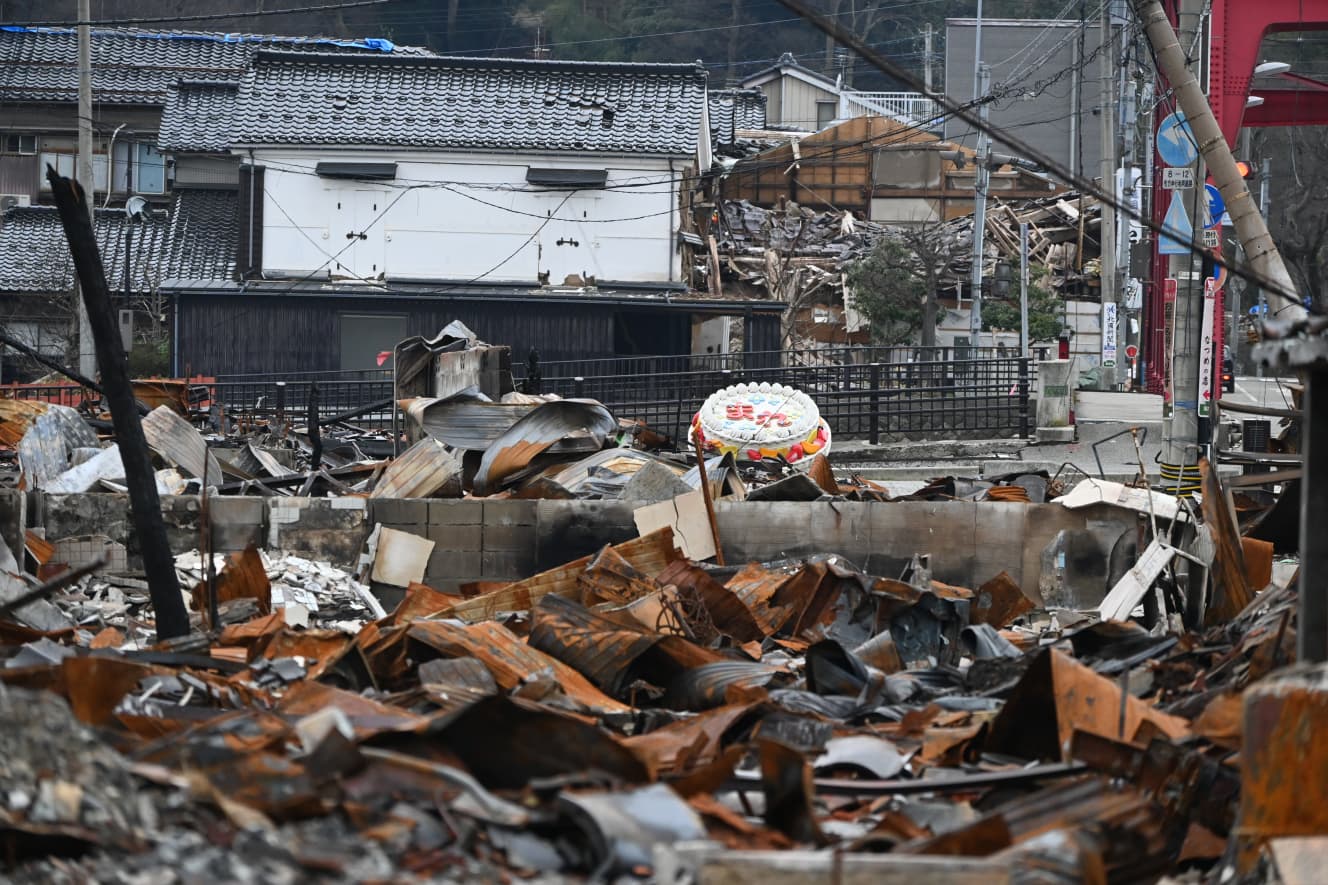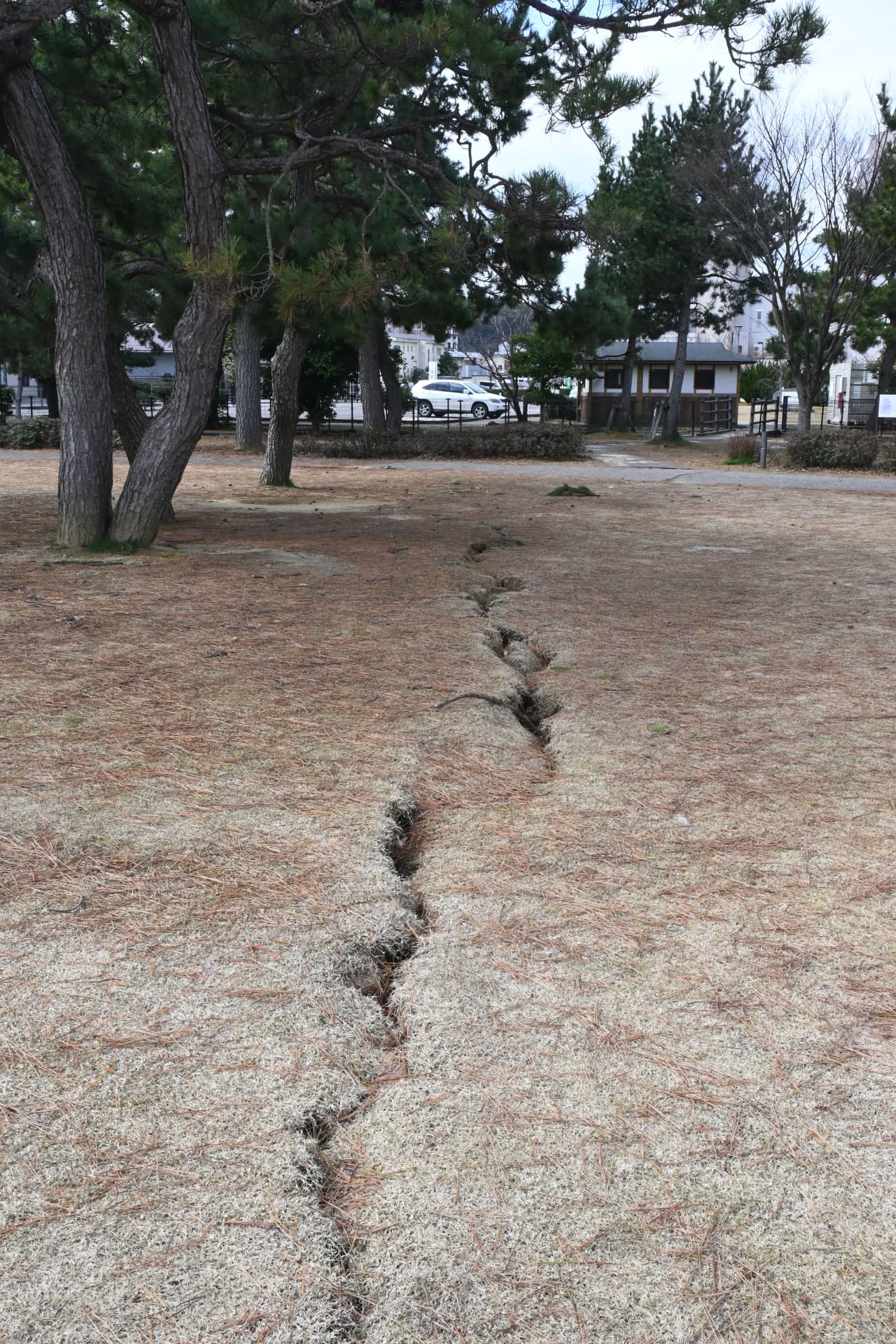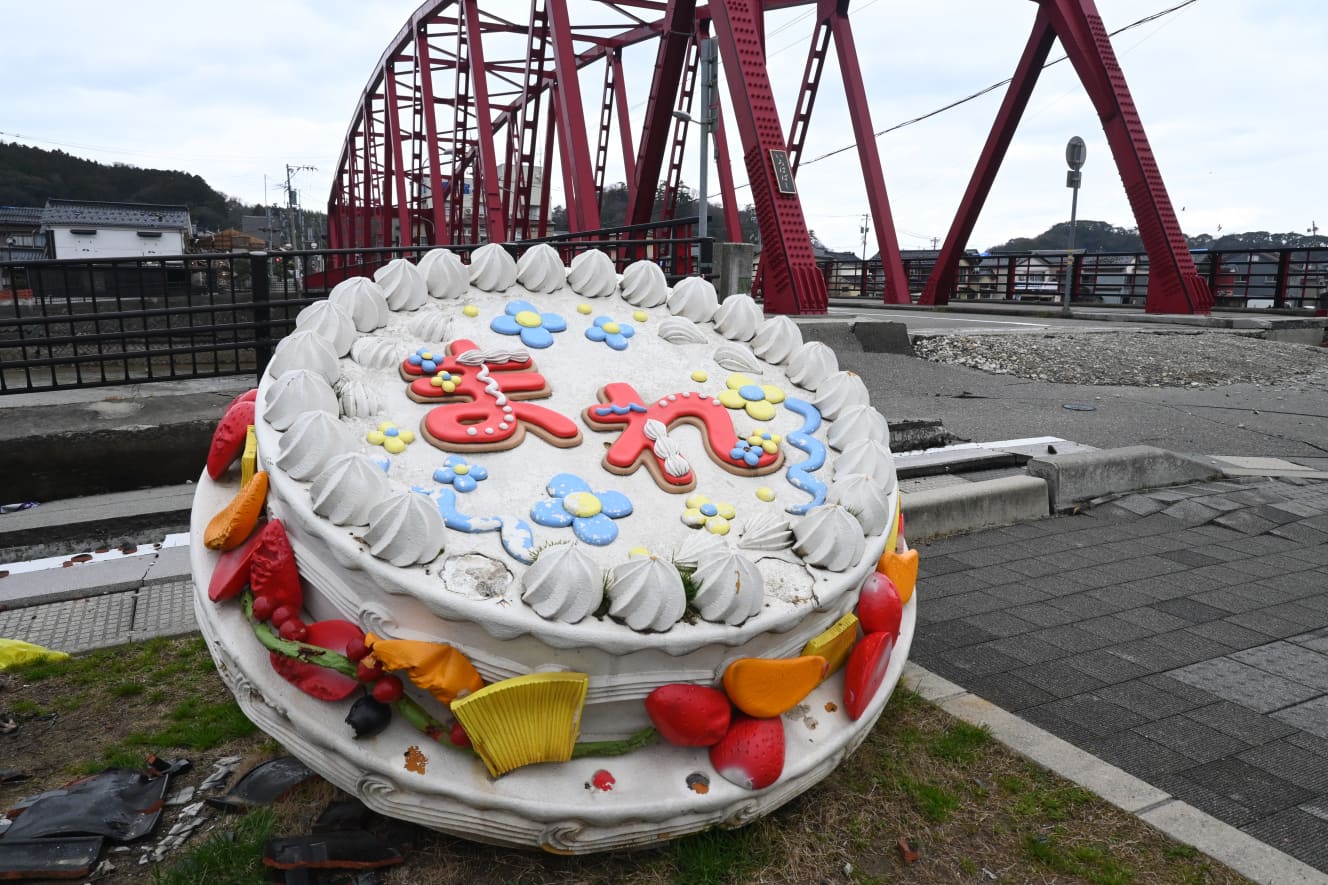Rare Cake Miraculously Survives, Report on Noto Peninsula Earthquake Chronicles Residents’ Pleas Amidst Devastation in Wajima
In the monochrome wasteland littered with rubble and rusted metal fragments, the object stood out vividly.
This is the morning market of Wajima City, Ishikawa Prefecture. It’s the site where a major fire broke out due to the Noto Peninsula earthquake on January 1st, destroying over 200 buildings. Amid the fire scene, miraculously spared, is an object beloved locally as the Rare Cake.
“Wajima City was the setting for the NHK morning drama ‘Mare’ broadcast in the first half of 2015. It’s the story of a heroine (played by Tao Tsuchiya) dreaming of becoming a patissier, growing while working as a city employee. A commemorative hall was built in the morning market to mark the broadcast. Although the memorial hall was destroyed by the intense flames of the Noto Peninsula earthquake, the cake sculpture in front of the building escaped destruction. It became a topic of conversation on social media as the miracle cake, encouraging local residents,” said a national newspaper reporter who visited the scene.
When the reporter visited the site, indeed, there was a cake sculpture with Mare written in red near the Iroha Bridge. Decorated with strawberries and cream, it gave off a cute impression.
Differences in Reconstruction Status Even in the Disaster Area
A local woman whose home burned down is calling out:
“The morning market has become completely unrecognizable. It’s a relief that Rare Cake is still here. Please come and see it.”
On March 16, the Hokuriku Shinkansen line was extended to Kanazawa and Tsuruga, and the Hokuriku Support Discount aimed at supporting tourism in the Noto Peninsula also began. However, the areas heavily affected by the disaster are still not ready to accommodate travelers.
When visiting Wajima Onsen in Nanao City after Wajima City, there was no hot water in the bathtub due to water supply disruption, and there were many cracks in the outer walls of the hotels lining up. Fissures remained in the lawn square, and the observation deck had collapsed, marked with “No Entry.”
Tourism officials in Ishikawa Prefecture are disheartened.
“(Places with minimal damage like) Fukui and Toyama, as well as (the southern part of Ishikawa) Kaga Onsen, can accommodate visitors, but at this point, Wajima is far from recovery. If tourists cannot visit the heavily affected areas, we cannot expect much economic impact from the Hokuriku Support Discount. There are many dangerous areas, and tourists cannot even visit tourist spots or scenic areas.”
The disaster-stricken areas of the Noto Peninsula continue to face hardships. The heartfelt plea of the local woman, encouraged by Rare Cake, resonates deeply.






Interview and text by PH0TO: Masahiro Kawayanagi

